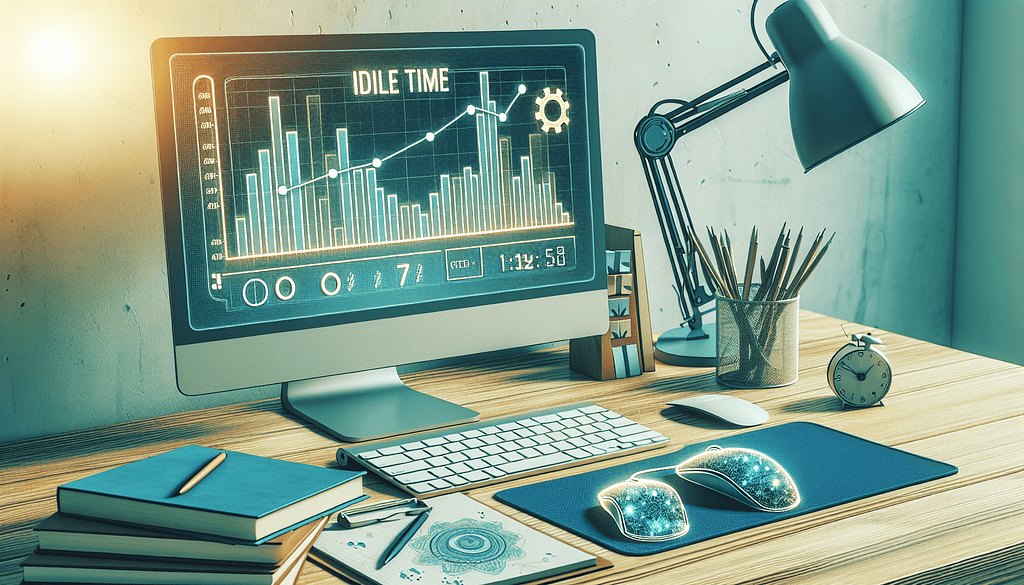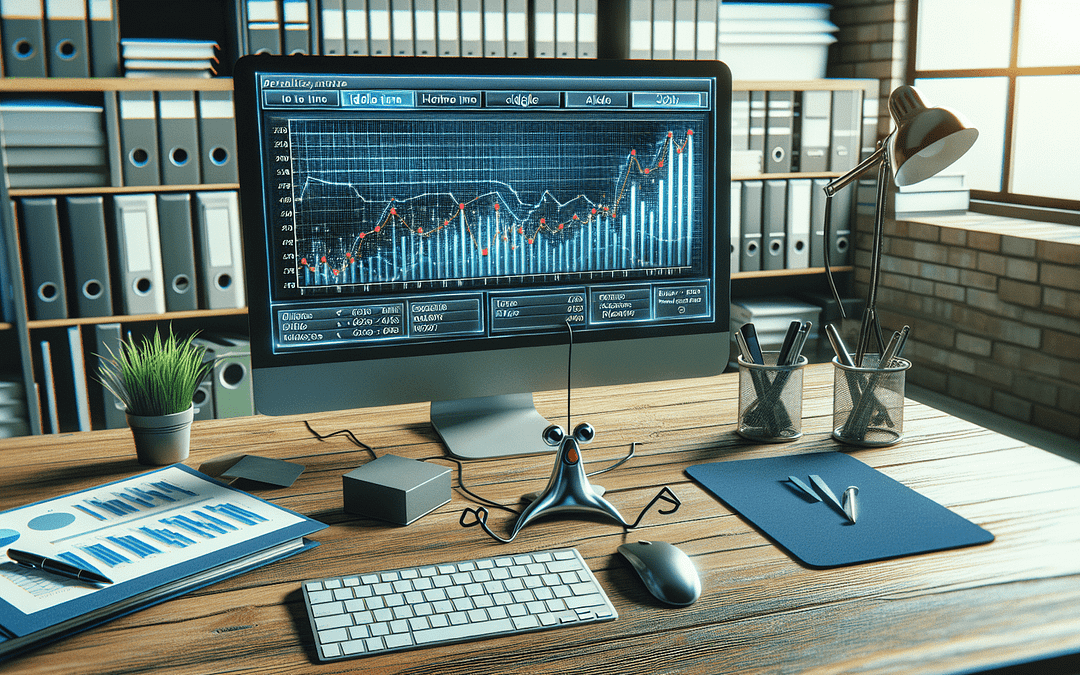In today’s remote work environment, employee monitoring software like Time Doctor plays a pivotal role in distinguishing active work from idle time and ingenious tricks like mouse jigglers. The software uncovers non-work activities by detecting real versus simulated mouse movements. A mouse jiggler, either in hardware or software form, keeps a computer awake to dodge inactivity alerts, ensuring seamless downloads or uploads and accurate time logging for passive tasks. Employers can employ strategies like monitoring installed apps, requiring timely responses, and utilizing tracking tools that capture screenshots to verify activity. It’s crucial to handle detection with communication and education, fostering transparency and trust while adhering to legal and ethical guidelines. Have you ever wondered how companies keep tabs on their employees, especially when remote work is involved? It’s a hot topic these days, as more and more of us find ourselves swapping the office cubicle for the home office. I’ve been curious about this too, and I’ve found some fascinating stuff that I’m thrilled to share with you. Today, we’re diving into the world of employee monitoring software and how it reveals idle time and something called “mouse jiggler” usage. Let’s get into it!

Purpose of Employee Monitoring Software
Employee monitoring software like Time Doctor can show what remote workers are really up to. It doesn’t just track their work hours; it also detects idle time and uncovers non-work-related activities. This is where it gets interesting. Have you heard of tools like mouse jigglers? These little gadgets and apps can make it look like you’re active on your computer, even when you’re not. It’s a clever trick some people use, but modern monitoring software is catching on.
Unveiling Idle Time
Idle time detection is crucial if a company wants to ensure employees aren’t slacking off. With software like Time Doctor, managers can see periods of inactivity and investigate if necessary. It’s not just about playing Big Brother but ensuring everyone is productive and engaged in their work.
Non-Work Activities
Non-work activities could range from browsing social media to online shopping during office hours. Excessive idle time flags the system, prompting a closer look at what’s really going on. A comprehensive tracking tool helps ensure that employees stay on task, and everyone’s pulling their weight.
What is a Mouse Jiggler?
You might be wondering, “What on earth is a mouse jiggler?” Well, let me break it down. A mouse jiggler, also known as a mouse mover, is a device or app that keeps your computer in active mode. It does this by moving the cursor periodically, fooling the system into thinking you’re hard at work.
How It Works
These devices work simply by simulating mouse movements. They can be very straightforward or more complex, depending on whether they’re hardware or software-based.
Types of Mouse Jigglers
There are two main types of mouse jigglers: hardware and software. Each has its own perks and downfalls, and understanding both can help you recognize if someone’s trying to game the system.
Hardware Mouse Jigglers
Hardware mouse jigglers are tiny gadgets that you can place under a wireless mouse. They’re often USB-powered and easy to use. A device like this moves the mouse at set intervals, ensuring the computer always thinks someone is there.
| Pros | Cons |
|---|---|
| Simple and plug-and-play | Easily detectable by sight |
| Doesn’t require software install | Limited control over movements |
Software Mouse Jigglers
On the flip side, software mouse jigglers are applications that simulate mouse movements on your screen. They’re more discreet but can still be detected by savvy monitoring software.
| Pros | Cons |
|---|---|
| Not visible physically | Requires permission to install |
| Can customize movement patterns | Potentially detectable by monitoring software |
Reasons Employees Use Mouse Jigglers
So why would someone use a mouse jiggler in the first place? While it might seem sneaky, people often have their reasons.
Avoiding Inactivity Alerts
One common reason is to avoid those pesky inactivity alerts that pop up when you take a break. It could be a quick breather or grabbing coffee, but your system flags it as idle time.
Preventing Sleep Mode
Another reason is to keep the device from going to sleep during tasks like uploads or downloads. Imagine waiting for a massive file to move along, and the system keeps going into sleep mode. A mouse jiggler can prevent that.
Correct Time Logging
Sometimes, tasks don’t require constant typing or scrolling. For example, if you’re reading a long document, you might not touch the mouse or keyboard for a while, which could falsely get logged as idle time. A mouse jiggler keeps the system in an active state, ensuring accurate time logging.
Detection Strategies
With so many clever tricks up people’s sleeves, how do companies keep tabs on actual productivity? There are several strategies for detecting idle time and unusual activities, and here’s a lowdown on them.
Monitor Installed Apps and Devices
Companies can install software that monitors any unauthorized apps or devices plugged into company-issued PCs. If a mouse jiggler is found, it’s a clear red flag.
Response Time Requirements
By requiring timely responses to messages and calls, managers can ensure that employees are genuinely active. It’s not foolproof but acts as a great supplementary check.
Employee Monitoring Software
Comprehensive tracking software goes a long way. Time Doctor, for example, can monitor mouse movements, activity, and idle time. It even takes screenshots and screencasts at intervals to verify genuine activity.
Legal and Ethical Considerations
It’s not just about what you can do, but what you should do. Monitoring employees’ computer activity comes with its own set of legal and ethical considerations.
Legality and Consent
Generally speaking, it’s legal to monitor employees, provided they’re informed and have given consent. Transparency is key. Letting people know they’re being monitored can encourage productivity and reduce illicit activity.
Privacy Laws
Compliance with local privacy laws is crucial. Different regions have varying regulations about what’s permissible. Always ensure that any monitoring activity is within the bounds of these laws to avoid legal pitfalls.
Employee Reactions and Handling Detection
Let’s face it, nobody likes feeling spied on. Reactions to monitoring vary widely, and handling these situations with care and transparency is vital.
Transparent Communication
One major way to mitigate negative feelings is through transparent communication. Explain why monitoring is necessary and how it benefits everyone by keeping the team productive and workflow smooth.
Addressing Mouse Jiggler Usage
If an employee is found using a mouse jiggler, here’s a step-by-step approach to handle it:
Communicate
First, understand their reasons privately. Jumping to conclusions can often lead to misunderstandings. Maybe there’s a legitimate reason for their actions.
Educate
Clarify the company’s policies and the importance of trust in a workplace. Sometimes people don’t realize the implications of their actions.
Review Workload
Ensure their workload is manageable. An overloaded employee might resort to shortcuts out of sheer stress and pressure. Reviewing and adjusting tasks can lead to significant changes in behavior.
Document the Incident
Keep records of the incident for future reference. Documentation helps in tracking behavioral changes and serves as a reference point if further issues arise.
Follow-Up Monitoring
Monitor future performance and compliance. Following up shows that the company takes such incidents seriously and checks continuous improvement.
Additional Resources and Information
For those curious to dive deeper into this topic, Time Doctor offers a plethora of resources, including team productivity tools and other monitoring software. They also touch on related subjects like measuring productivity, work schedules, meetings, time management tools, and prioritization in business.
Relevant Tools and Techniques
Here are a few additional tools and techniques to consider:
- Productivity Measurement Tools: Software that helps managers get a clear picture of how productive employees are.
- Work Schedules: Effective work schedules make a huge difference in overall productivity.
- Meeting Starters: Tools to make meetings more efficient.
- Time Management Tools: Apps and techniques for better time management.
- Prioritization: Methods to help employees prioritize tasks effectively.
Conclusion
So, there you have it—a comprehensive look into the world of employee monitoring software and the clever tactics some employees use to trick the system. It’s a blend of technology, psychology, and ethics all rolled into one. As remote work continues to grow, understanding these elements becomes increasingly vital for both employers and employees.
Monitoring doesn’t have to be about distrust; it’s more about ensuring productivity and maintaining a smooth workflow. When done transparently and ethically, it benefits everyone involved. So next time you find yourself wondering how companies monitor their remote workers, or if you catch sight of a mouse jiggler, you’ll know exactly what’s going on.
Feel free to explore more on Time Doctor’s resources and keep those productivity levels soaring. Until next time, stay curious and keep learning!




